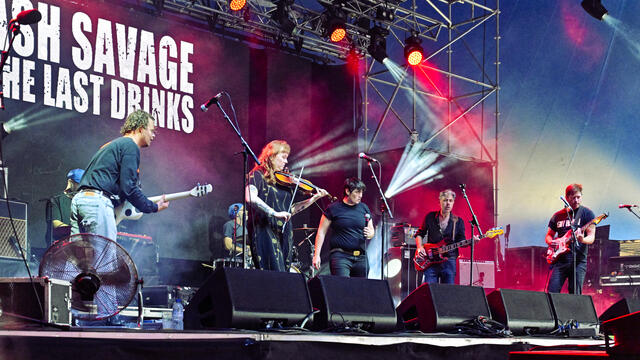Wow. It’s been more than four years since we last drove Range Rover’s Velar and not much has changed.
Named the most beautiful car in the world in 2018, the name Velar comes from a series of pre-production Range Rovers in 1969.
They’ve just updated the range with the addition of a plug-in hybrid that adds 53km of electric-only range — but other than that it all looks familiar.
In terms of size, Velar sits between Evoque and Sport, and shares a platform with cousin the Jaguar F-Pace.
Interestingly, although they all come with all-wheel drive, it lacks low range gearing, so any off-road adventures are limited. In fact, it says something about the car, because Velar is a car that’s more about comfort and luxury than getting it dirty.
Land Rover sold 4348 vehicles here last year, 319 of them Velars. Not many you might think, but more than the Discovery and Range Rover put together.
It’s biggest seller? The Defender (it’s new of course).
STYLING
Check out the burnished copper-coloured bling.
It’s an interesting shape that presents differently from different angles. The downside of the steeply raked windscreen and sloping roof line is a trade off in space for style.
The front and rear look the business, but in profile it’s long, skinny and torpedo-like, and not quite in proportion.
The door handles sit flush with the body and pop out when the car is unlocked, but it is the old-style system with a small, finger-operated button to initiate the process.
Notice I didn’t say ’thumb’ because the button is located on the right-hand side of the handle – I guess it works for left-handed people.
You’d think after nigh on six years, it would be time for a makeover?
And, as we went to press, JLR revealed pics and details of a new model which made its worldwide entrance on the TikTok social media platform.
The redesign is described as minimalist, but frankly the new model looks just like the current one.
The big changes can be found in the cabin where twin touchscreens have made way for a single 11.4-inch curved screen that controls everything, in line with other family members.
Land Rover is taking orders now, but there is no indication at this stage of when those orders will be filled.
The current range kicks off with the four-cylinder R-Dynamic S P250 and SE P250, priced from $96,600 and $98,900 respectively, followed by the six-cylinder SE P400 MHEV ($125,200) and HSE P400 MHEV ($136,700), with the plug-in hybrid P400e PHEV ($138,800) — all of them petrol-based.
One diesel model is offered, the Edition D300 MHEV, priced from $122,900.
INFOTAINMENT
Infotainment comes courtesy of a 10.0-inch pivoting touchscreen and the Pivo Pro operating system, with Bluetooth, Alexa voice control, built-in navigation, AM/FM/DAB radio, wireless Apple Carplay and Android Auto, plus a 12-month pre-paid data plan.
No mention of wireless phone charging, but there’s 1 x USB-A and 1 x USB-C (Charge and connect) in the first row and 2 x USB-C and a 12-volt power socket in the second row.
A 400-watt Meridian audio system with 12 speakers is standard. HSE ups this to 3D surround sound, with 750 watts and 17 speakers.
SAFETY
Five-star safety comprises six airbags, a rear-view camera, autonomous emergency braking (AEB) with pedestrian detection, lane departure warning (LDW) and speed assist systems (SAS). The safety rating is due to expire in September.
There’s also blind spot assist, rear traffic monitor, lane keep assist, traffic sign recognition and adaptive speed limiter, adaptive cruise control with steering assist, driver condition monitor and a tyre pressure monitoring system (TPMS).
Head-up display surprisingly remains a $2420 option. A 360-degree camera is optional but unavailable because of supply problems.
DRIVING
With seating for five occupants, some may find the cabin a bit claustrophobic, especially in the back.
With high sides and dash, together with narrow windows, you feel like you’re looking over the top.
Rear legroom is limited too.
The rotary gear selector has been replaced in the latest model by the same low-profile selector that can be found in the Jaguar F-Pace that we drove recently.
The usual plethora of knobs and switches have been absorbed by the seriously impressive centre console with its two, double-decker touchscreens.
The system is generally easy to use. The top screen controls such items as audio, phone and navigation, while the bottom screen adjusts functions like the air suspension and off-road modes.
We spent a good five minutes trying to figure out how to switch from miles to kilometres for navigation. In the end, we gave up, just like the last person obviously did.
Our test vehicle was fitted with a fully digital instrument cluster that can be configured the way you like it – two dials, a single dial or wall to wall navigation.
The P400 dispatches the dash from 0-100km/h in a rapid 5.5 seconds and has a top speed of 250km/h.
It features an electric supercharger supported by a twin scroll turbocharger and Continuous Variable Valve Lift (CVVL).
Air suspension is standard along with Adaptive Dynamics damping technology.
Ground clearance is normally 205mm, but pumping it up for a bit of farm action takes that figure to 251mm and it is able to safely tackle water up to 580mm in depth.
SUMMING UP
For a start there’s the size. It’s bigger than an Evoque but smaller than a Sport.
Second, without low range all-wheel drive, it will have limited off road ability, but sand, dirt roads and muddy farm driveways won’t be a problem.
And, finally, unless you’re into tech, you’re probably not going to like it much because just about everything is controlled from one of two touchscreens.
Is it worth $150K? Some people think so. Only you can be the judge.











